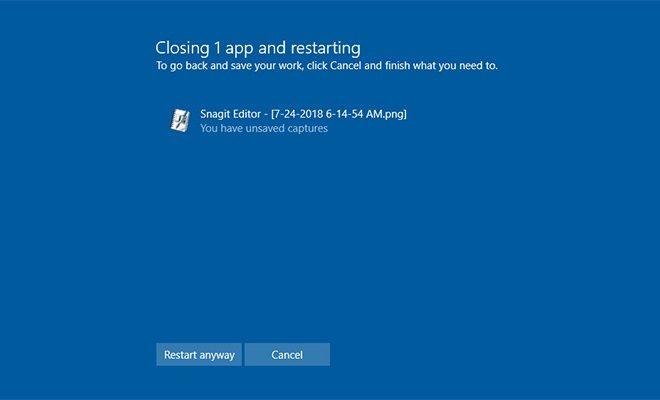How to Automatically End Tasks While Shutting Down Windows

As a frequent computer user, you may have encountered instances when some programs refuse to shut down properly with Windows, often causing delays in the shutdown process. This can be a frustrating experience, especially if you are in a hurry to power off your computer.
Fortunately, there are several options available that can help you automatically end tasks while shutting down Windows. Here are some proven strategies you can use to overcome this challenge:
1. Use Windows Task Manager
Windows Task Manager is a built-in program that can help you identify and end tasks that are slowing down your system or causing other issues. To start Task Manager, press the “Ctrl” + “Shift” + “Esc” keys on your keyboard simultaneously. Alternatively, you can right-click on the taskbar and select the “Task Manager” option.
Once Task Manager is open, click on the “Processes” tab. Here you will see a list of all the processes currently running on your computer. You can sort these processes by clicking on the column headers such as “CPU,” “Memory,” or “Disk.” This will help you identify which programs are using the most resources.
To end a task, simply select it from the list and click on the “End Task” button. This will close the program and free up system resources.
2. Use a Third-Party Program
Alternatively, you can use a third-party program that can help you automatically end tasks while shutting down Windows. One such program is EndItAll2, which is free to download and simple to use.
To use EndItAll2, download and install the program on your computer. Next, launch the program and select the tasks you want to end. You can do this by selecting the programs from the list or by using the search function to search for specific programs. Once you have selected the programs, click on the “Kill Selected Processes” button to end them.
You can also set EndItAll2 to automatically end the selected programs every time you shut down your computer. To do this, click on the “Options” tab and select the “Kill Processes” checkbox. This will ensure that the selected programs are automatically closed when you shut down your computer.
3. Disable Unnecessary Startup Programs
Another effective way to speed up the shutdown process and prevent programs from sticking around is to disable unnecessary startup programs. This can be done using the Windows Task Manager, as explained earlier.
To disable startup programs using Windows Task Manager, click on the “Startup” tab. Here you will see a list of all the programs that start automatically when you log in to your computer. Select the programs that you do not need and click on the “Disable” button. This will prevent these programs from starting automatically when you log in to your computer.
In conclusion, automatically ending tasks while shutting down Windows is essential for maintaining a healthy and efficient system. You can use tools such as Windows Task Manager, third-party programs, and disabling unnecessary startup programs to achieve this. By following these tips, you should be able to speed up the shut down process, save time, and prevent programs from causing further disruptions.





